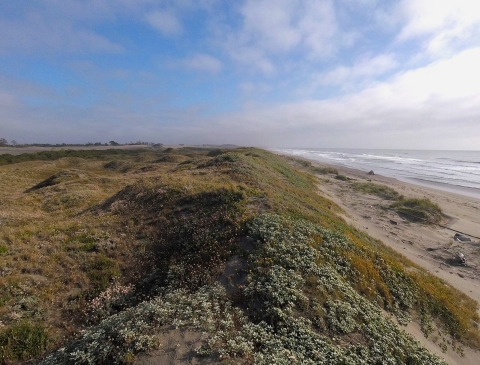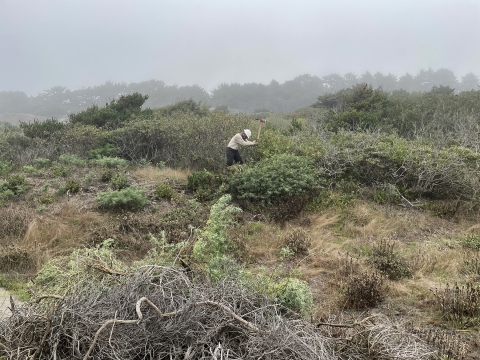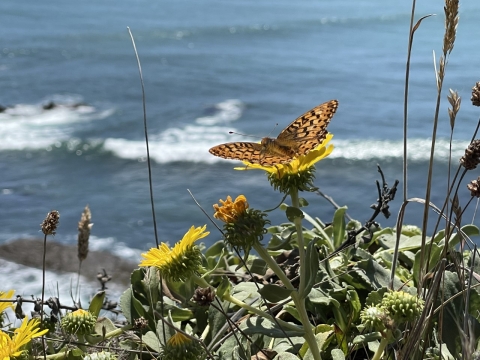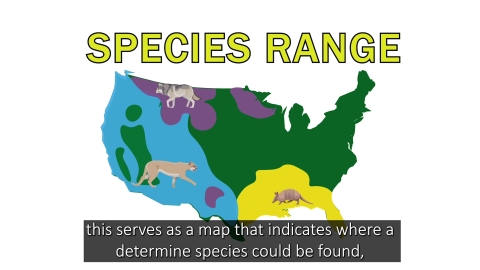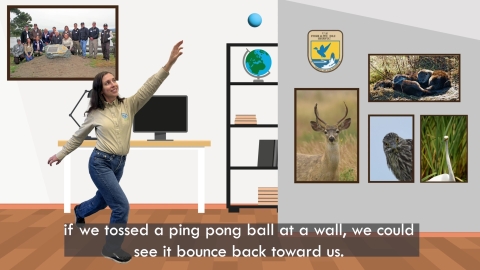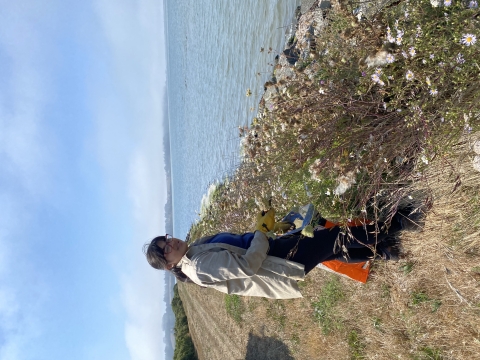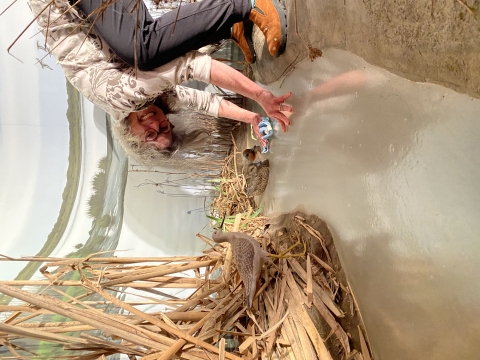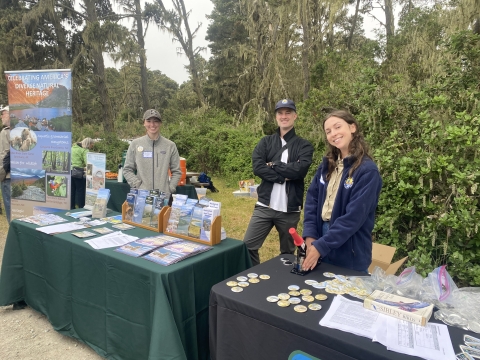In the Spotlight
Wadulh: The New Horizons of Humboldt Bay Refuge
Humboldt Bay National Wildlife Refuge was established in 1971 to protect precious habitat, endangered species, and to create a sanctuary for wildlife. The refuge has grown and improved over the years via land acquisition and habitat restoration. Over the last decade, multiple efforts have resulted in the acquisition of parcels under the authority of the Migratory Bird Conservation Act of 1929, the Migratory Bird Hunting and Conservation Stamp Act of 1934, the Fish and Wildlife Act of 1956, the Refuge Recreation Act of 1962, and the Endangered Species Act (ESA) of 1973, as amended. In 2023, the coastal dune portions of the refuge increased from 600 to 900 acres after the integration of the Wadulh Unit to the refuge complex. Coastal dune environments support a diversity of plant and animal species and serve as natural barriers to wind and wave events. Many forms of degradation, both natural and human caused, have impacted dune environments. One goal of the refuge Comprehensive Conservation Plan is to “Conserve and restore globally rare dune and dune forest habitats, associated native plant and animal species, and support recovery of threatened, endangered, and endemic species dependent upon these habitats.”
Ongoing research and restoration efforts have produced positive results, but dune restoration involves working with complex variables where both biological and physical elements must align to reestablish functionality. Refuge Ecologist Andrea Pickart mentions that even though dunes are inherently harsh environments, their ecological relevance importantly relies on mutualistic relations between plants fungi, microorganisms, and each other. Disruption of this equation by invasive plant species leads to over-stabilization of dunes, soil enrichment (nitrogen-fixation), potential shoreline loss and biodiversity decline. Pickart explains the science steps behind the Wadulh dune restoration, “this is a significant project because it’s the first time we’re restoring lupine invaded dunes on a large scale. Lupine enriches the soil with nitrogen, creating litter and duff. That means you cannot just take out the invasive vegetation and have natives return. You need to restore soils. There are different methods (both manual and with heavy equipment) to remove the enriched layers, by scraping the surface down to mineral soil. The soil is then extremely sterile and there is no native seedbank. Nursery grown plants are inoculated with mycorrhizae (symbiotic fungi) that help the plants thrive in the sterile environment.
The acquisition of new parcels brings hope to rare and endangered species inhabiting our coastal landscape. However, more land means more management, resources, and the ability maintain the progress. Jillian Zimmerman, Biotechnician and Restoration Manager for the Wadulh Restoration Project, also oversees collaborative projects with non-profit organizations and community partners at the Ma’le’l and Lanphere Dunes Units. Zimmerman explains “The Wadulh Dunes project is consuming a big chunk of our time, however, we still have our usual monitoring and invasive plant removal in the dunes and salt marsh salt marsh
Salt marshes are found in tidal areas near the coast, where freshwater mixes with saltwater.
Learn more about salt marsh . California Conservation Corps (CCC) helps a lot with our annual invasive grass removal. The American Conservation Experience crew (ACE) also are assists on the Wadulh Dunes project. So far, they have removed about 100 piles of Yellow Bush Lupine.”
The refuge’s early history has relied on the foundation of the U.S. Fish & Wildlife Service, working along others to achieve our most important mission, conserve and protect. Partnering with multiple entities make conservation happen, reinforcing commitment and establishing bonds between people, creating a culture of cooperation, respect, and honor for the work we do.
Wildlife & Conservation
Conserving Butterflies: A race against the clock
Notwithstanding the early appearance of humans on earth, our short background has significantly changed the natural landscape, naming this timeline as the Anthropocene era. Since 1970, biodiversity has declined by 69% in species populations (World Wildlife Fund, 2022), with habitat loss being the major pressure. The International Union for Conservation of Nature (IUCN) points out that 28% of the assessed species are threatened with extinction and this might be even higher as we have only registered over 40% of all species on earth. Imperiled small species like the Oregon Silverspot butterfly (Speyeria zerene hippolyta) and Behren’s Silverspot butterfly (Speyeria zerene behrensii), often go unnoticed by the public attention while still silently declining. Moreover, habitat loss becomes even more acute for specialist species as their distribution is restricted to the availability of unique and scarce resources.
Clint Pogue, a Botanist from the Arcata Fish & Wildlife Office for the U.S. Fish and Wildlife Service (USFWS), is an experienced conservationist who conducts surveys, restoration, and recovery models in several counties to enforce the protection of endangered butterflies. “The Oregon Silverspot butterfly experienced a severe decline in Del Norte County in the past few years. To address this, we are proposing a two-pronged approach. First, we are restoring habitat to the best possible condition with all the resources the species need to complete their life cycle, and secondly, we are waiting for the populations in Oregon to be robust enough that we could start to introduce some individuals for the population in California.”
The scenario does not differ for the Behren’s Silverspot butterfly, whose population critically declined in 2020. Pogue elaborated “We saw none on a survey, just one incidental sighting. This species has a restricted range, from the Southern half of coastal Mendocino County and a fraction of Northern Sonoma County. Both in-situ and ex-situ conservation initiatives reinforce the recovery of Behren’s Silverspot butterfly; a captive rearing program in partnership with the Sequoia Park Zoo ensures increasing the population while intensively restoring habitats. Despite the decline, in 2021 we were able to find a substantial population of them. We saw about 40 to 50 individuals, and we collected 7 females, we brought those to the Zoo, and ended up releasing 80 adults in 2022. That was exciting. It is a long way from recovery. Conservation efforts are going at full steam ahead, and in 2023, conservationists released 245 more individuals into the wild. We got close to the brink of that species, unfortunately, that is happening more frequently. Butterflies that used to be incredibly common are now increasingly very rare. Some species have just hundreds left in the world and potentially even less.”
Clint mentions that we’re at an inflection point with our pollinators and emphasizes the indispensable collaboration of the community to guarantee the perseverance of the species. From volunteering in harvesting violet leaves for the captive rearing and helping in habitat restoration efforts, to making your backyard a suitable habitat for pollinators, you can help. "Go to pollinator.org and find a zip code-specific pollinator guide where you learn about planting native plants not just for butterflies, but for all kinds of pollinators and insects. One thing that’s good for insects in general is just leaving your lawn like it is. Maybe consider leaving a small patch of your lawn untreated, the insects love that and would appreciate it.”
As we continue tracing our dominance on Earth history, big challenges and uncharted scenarios still pressure the future of the Anthropocene Era. Despite the rapid change of our natural landscape, it is the first time in history that our species assumes the responsibility of protecting other species to prevent extinction. Conservationists like Clint Pogue and all partners involved demonstrate one more time that the real humanity’s stone isn’t our mistakes, but what we do after them.
Community & Outreach
Nature Inspires series jumps into its second season
Nature Inspires series jumped into its second season with two new videos, How to Track Wildlife and Bats. In the How to Track Wildlife video, biologist Kevin Soto interprets some methodologies scientists apply when studying animals, like trap cameras. It also emphasizes the use of observation skills, rationing, and evaluation. This video also contains an interactive game where viewers identify fractions of wildlife pictures from trap cameras in a short time.
Zoologist Nicole Matonak joined the series to talk about one of our local refuge’s residents, bats. Nicole explains the role bats have in the ecosystems, their biology, and even some similarities they share with us. Nicole also interprets a popular adaptation most bats are known for, echolocation. Nicole submerges into animated scenarios and even interacts with a flying burrito. This second season is highlighted by the appearance of new characters and the advancements in animations, allowing the presenters to interact with digital illustrations and immerse the viewer into a new, fun, and comprehensive interpretive experience.
Cultivating Mutually Beneficial Relationships
Volunteers want to be helpful and they need to know that what they are giving is meaningful. We want to engage the community in the work we do and we need their support. We cultivate mutually beneficial relationships.
We get a lot of inquiries about volunteering. Folks want to know what we have for them to do. Visitor Services and Habitat Restoration are programs where we can train people and put them to work quickly. It branches out from there depending on their availability, interest and ingenuity. There is no lack of work or opportunity!
The following vignettes highlight just a few of the amazing people that contribute their time and talent to Humboldt Bay National Wildlife Refuge.
Leti Benitez is a high school student that is exploring a career in forestry. She inquired about volunteering at the refuge last spring and has been volunteering about 6 hours a week ever since. Leti has been able to experience a variety of refuge project work including invasive, non-native plant removal, native shrub planting and maintenance (including watering from a 500-gallon tank on a truck all summer) Leti helped us pack up and move out of the Visitor Center for renovation. Then she oiled wood panels and baseboards before we moved back in. In between these tasks she covered visitor information duty at both the Visitor Center and the Hunt Cabin. This spring, we want to get her out on some biological surveys!
Stephanie King-Hoffmann and her partner Jeff Hoffman volunteer a few Sunday mornings each month at the Visitor Center. That in itself is HUGE!
Visitor Services volunteers ensure the refuge and Visitor Center are open to the public. They provide a welcome and informative experience. Humboldt Bay NWR fortunately has several volunteers that contribute hundreds of hours each year. We recently renovated the Visitor Center and when it was time to move back in, the dust level in the diorama was off the charts. Stephanie is petite and agile and could climb up into the fragile display areas. Her efforts brought the sparkle back to the beautiful depiction of wetlands around Humboldt Bay.
Jesse Boomer is the Lanphere Dunes Volunteer Caretaker.Along with his partner, Jillian Zimmerman, Wadulh Restoration Manager, Lanphere Dunes Caretaker and Biotech, they live in a residence on the refuge. Jesse and Jillian do a great variety of caretaking tasks in exchange for housing. The list includes, habitat restoration, trail clearing, general construction, fence building, maintenance, and public outreach. Jesse constructed several bat boxes for the relocation of a large colony of bats from the side of a building to the new boxes in a much better location.
Find out how you can get involved!
Contact Denise Seeger
The National Natural Landmarks Program preserves sites illustrating the geological and ecological character of the United States. The program aims to enhance the scientific and educational value of the preserved sites, strengthen public appreciation of natural history and foster a greater concern for the conservation of the nation’s natural heritage. The program was established in 1962 by administrative action under the authority of the Historic Sites Act of 1935. The first National Natural Landmarks were designated in 1963. Today, there are more than 600 National Natural Landmarks in 48 states, American Samoa, Guam, Puerto Rico and the U.S. Virgin Islands.
Learn more about National Natural Landmark Dedication event

